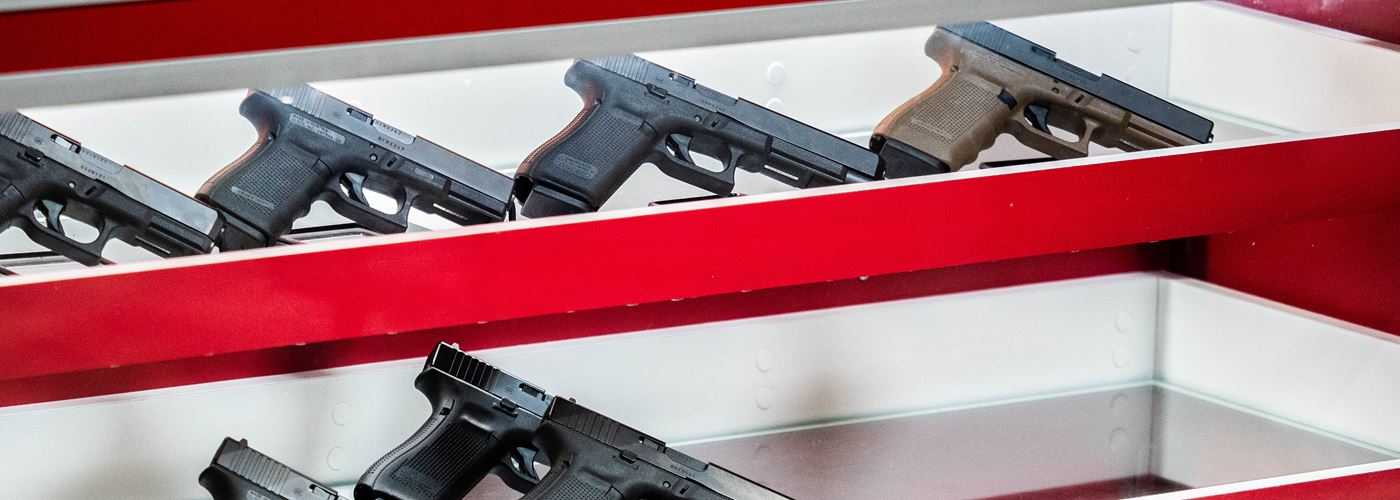
If you’re a woman and new to firearms, there’s a good chance people have definitive opinions about the gun you should carry. These people are probably older, gun-savvy and male. (Aren’t guys issued gun knowledge at birth?)
But my years behind a gun counter gave me a ringside seat to an endless parade of well-meaning gun mentors who didn’t always get it right.
"Here you go, sweetie. With your tiny hands, this Ruger LCP is the perfect carry gun for you," I’ve heard many a hubby say to his petite wife. Never mind the punishing recoil that prompts her to hide the derned thing in a drawer forever!
Then there were the gents who lovingly caressed the newest, shiniest Kimber Ultra Raptor as they told their buddies, "This will be a perfect carry gun for wifey." (And a great weekend shooter for him!) Never mind that concealing it on a 125-pound frame will be one heck of challenge. Never mind that she hasn’t shot a .22 LR, let alone a .45 ACP with a three-inch barrel. You go right ahead and spend $950 on a gun that will end up being yours anyway. (Am I cynical to think that was the goal all along?)
I’m not bashing well-intentioned gun mentors. I was fortunate to have people guide me in my journey to firearms competency – people I continue to depend on for wisdom and insight. And if you’re new to firearms, it’s important to get opinions and take several firearms classes (from different instructors). Then trust yourself when selecting your first carry gun.
My first carry gun was a Walther P-22. Back in the days of 12-hour CCW classes, I wasn’t allowed to use it to qualify. I used a Springfield XD9, which I still own and shoot to this day. But for everyday carry, that little Walther was my comfort gun. I knew I could shoot it. I understood how it worked. And, most importantly, I practiced with it - regularly.
Today, I tell students and friends this isn’t an ideal carry gun. I would prefer they choose something with a higher caliber that’s less finicky on feeding and easier to take down and clean. But, darn it, if they love their little .22 (whoever the manufacturer) and shoot proficiently with it, I say any gun is better than no gun at all.
A lot of gun instructors give you "perfect world" scenarios. Yes, a minimum of 9 mm is best for carry. Yes, very small polymer-framed guns are the most concealable. Yes, a revolver is the simplest gun for a beginner to understand...and so on.
But we don’t live in a perfect world. (If we did, we wouldn’t need carry guns!) So, consider these points:
Try before you buy it. Don’t just hold it at the gun counter. Make sure you can pull the trigger. (Yes, different guns have different degrees of trigger poundage.) Make sure the recoil doesn’t faze you. Make sure you’re comfortable loading and unloading. And, if it’s semi-automatic, make certain you can rack the slide (there are several guns on the market today with wonderfully comfortable slides – the M&P 380 EZ, the Sig P238, the Walther PK 380 and many higher calibers as well).
Try several before you make your choice. Every gun is a trade-off. They all have advantages, but not all the advantages are the same. See what works best for you.
Choose based on YOUR vital statistics... your size, hand strength, dexterity, physical limitations, and – most of all – the likelihood that you’ll actually practice with it. If you plan to carry a personal defense gun, it’s imperative you become proficient. If, God forbid, you ever need to use it, you’ll be adrenalized and suffering from vision impairment, rapid heartbeat, limited dexterity and crippled thought processes. Using your gun needs to be second nature.
Figure out how you want to carry. I chuckle at those who say, "Hey, you need to adjust your clothing...buy a size larger, get a looser fit." Few of us can afford to invest in a whole new wardrobe to carry a gun. Forget trying to slide a holster onto your everyday belt. Most fashion belts can’t support the weight of a holster, let alone a fully loaded polymer or steel-framed sidearm. You must invest in a real gun belt! If you don’t plan to hip carry, then you need to explore other options such as a belly band, ankle carry, compression t-shirt or shorts, or even garter carry (for ladies in dresses – but remember that even small lightweight guns are heavy when strapped against your thigh). And then, of course, there is purse or backpack carry. This can be more convenient but presents its own host of issues, best addressed in a future article about how to dress for discreetly carrying a concealed weapon.
Consider your budget. If you have $1,000 to spend, better to buy a $500 gun and use the rest for ammo and training than to invest in a shiny new firearm you can’t afford to use!
Consider your home life and where the gun will reside when you’re not wearing it. If you have children at home, then you’ll need a gun safe that’s dependable (but easily accessible… to you only). Never compromise your family’s safety. How to introduce children to a gun is a subject for a future column.
Your new gun must fit your needs only. Advice is welcome and necessary, but in the end, if you don’t pick the gun that’s right for you, you won’t use it. And if you don’t use it, what’s the point?
Now that you can confidently select a firearm, you’re probably asking yourself, “Where can I find firearm classes near me?” Search for a firearms training course or instructor near you today.
